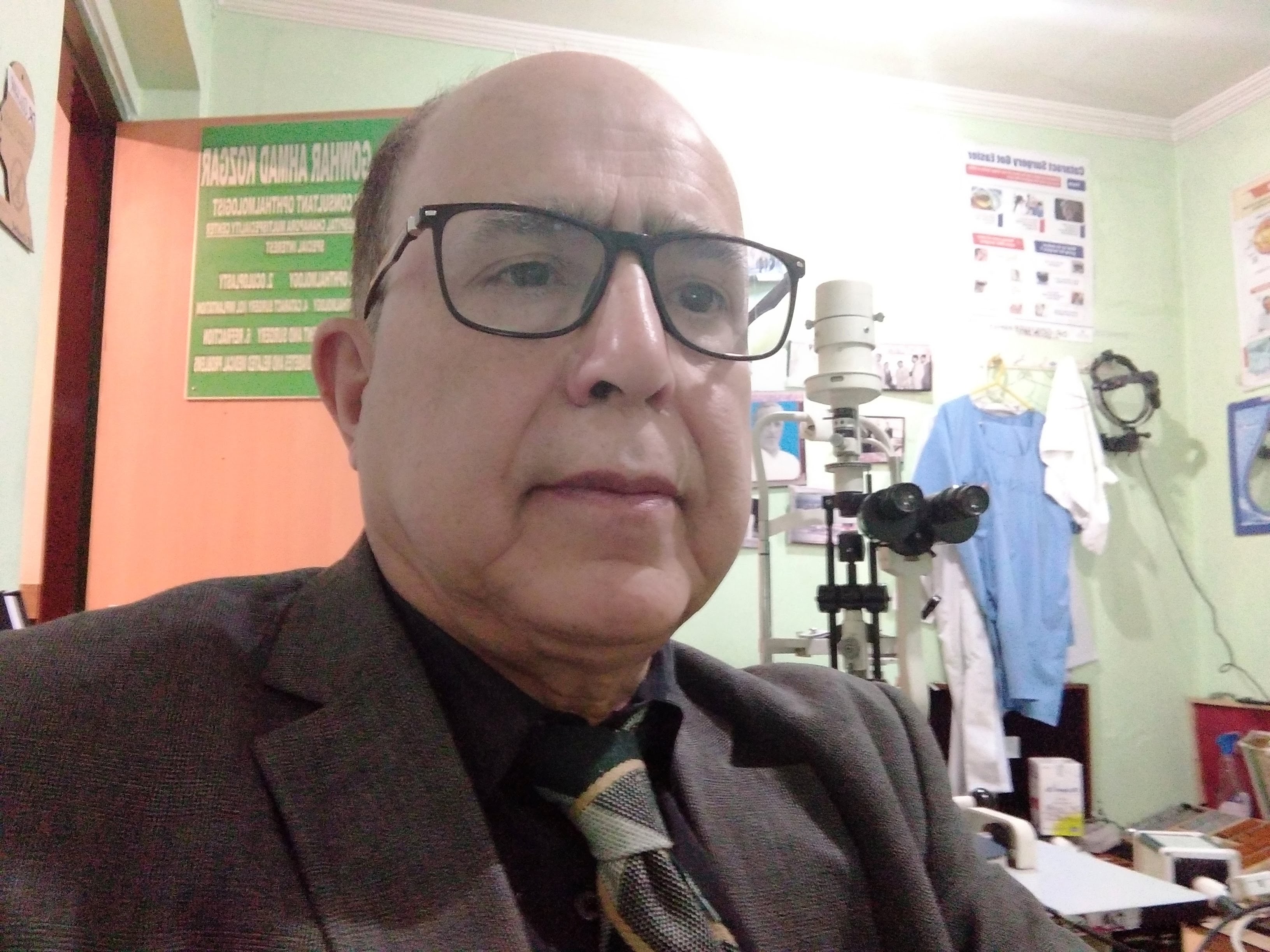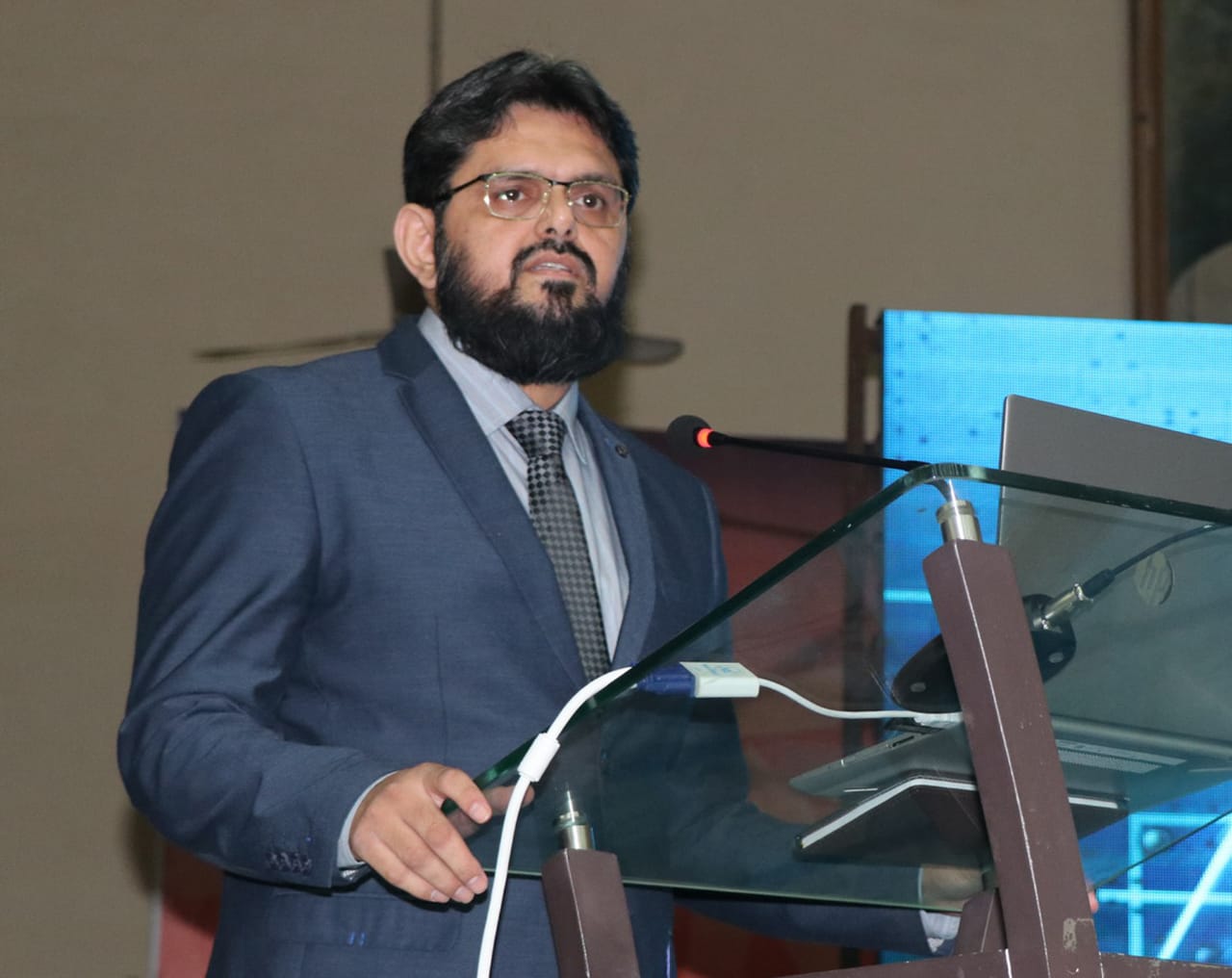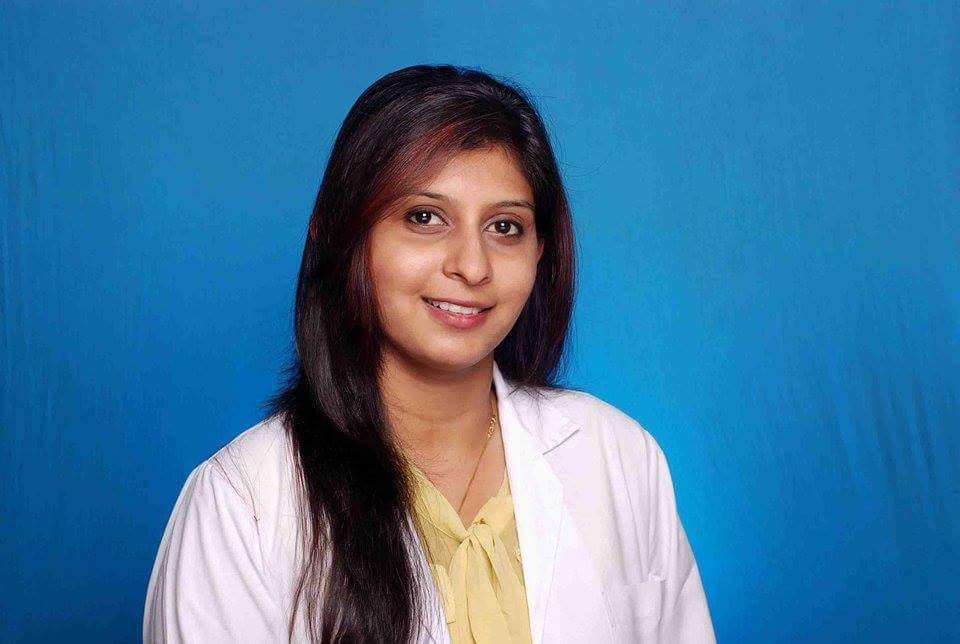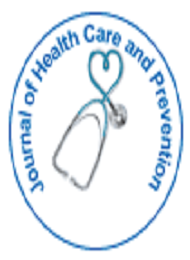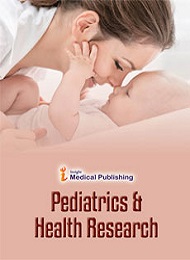Theme: Heal A Child, Change The World
Renowned Speakers
Pediatrics Healthcare 2022
It is our great pleasure to invite all of you to “6th International Conference on Pediatrics and Healthcare” which is going to be held as Webinar during November 21-22, 2022. Through our theme “Heal a Child, change the World”, the conference will analyse the recent developments and new initiatives that can be enforced to the research and advancements in the future prospective of Pediatrics and Healthcare. The field of Pediatrics is growing rapidly, and its development is making tremendous impacts in medicine and Medical Sciences. The importance and significance can be gauged by the fact that it has made huge advancements over the course of time and is continuing to influence various sectors.
It is our great pleasure to extend greetings and warm welcome to everyone attending the event of Pediatrics Healthcare 2022.
Massive group Pediatrics Conferences are gatherings known for knowledge sharing, exchange of research ideas of specific techniques and topics in Pediatrics field. Our expert honorary speakers will provide you with the most clinically up-to-date relevant information, you’ll leave better educated and more invigorated than you thought possible. Massive conferences will consider interdisciplinary and Trans disciplinary themes that address the challenges in various fields from multiple theoretical and practical standpoints. Our goal is to provide an inspiring and enthusiastic dialogue for constructive and critical communication. Massive Conferences are beneficial for researchers, Exhibitors to develop their business by participating and showcasing their products. Pediatrics Conferences provide a brand via product demonstrations, seminars, conferences and sponsorship opportunities. Pediatrics conference organized by Massive International offers the chance to promote brand reliability by technology displays, hospitality and networking events.
The purpose of the ‘Massive group’ is to provide a platform for academicians and researchers to put forward ideas and interpretations of the significance of the economic and cultural interaction. The Massive group hosts conferences to promote excellence in academic research.
Why to Attend?
Pediatrics Healthcare 2022 is the platform where you can conflict experts and authorities from around the world. It’s your time to grab the opportunity to join a group of Speakers, Discussion, and Exhibitor, Young researcher talk, Delegate, Poster, Networking and extra benefits. Pediatrics Healthcare aims to congregate academic scientists, researchers and research scholars to exchange and share their researchers and experiences on all the aspects of Pediatrics and Healthcare professionals. Pediatrics Conference provides premier multidisciplinary information for researchers, practitioners and scholars to present and discuss the most recent innovations, trends and researches and discuss the new roots of healthcare in Pediatrics.
Who Attends?
• Pediatricians
• Primary Care Professional
• Pediatric Dieticians
• Infant care specialist
• Clinical Nutritionists
• Pediatric Researchers
• Pediatric Surgeons
• Primary Care Doctors
• Pediatric Nutritionists
• Health-Care Professionals
• Pediatric Nurses
• Pediatric Physicians
• Researchers and Scientists
• Pediatric Herpetologists
• Pediatric Cardiologists
• Pediatric Endocrinologists
• Pediatric Gastroenterologists
• Manufacturing Medical Devices Companies
• Universities and College Students
• Business Entrepreneurs
• Pharmaceutical companies
Session 1: Children's COVID-19
Children of all ages can come ill with coronavirus complaint 2019 (COVID-19). But most kids who are infected generally do not come as sick as grown-ups and some might not show any symptoms at all. While all children are able of getting the virus that causes COVID-19, they do not come sick as frequently as grown-ups. Most children have mild symptoms or no symptoms. This is likely due to their immature vulnerable systems and lower airways, which make them more likely to develop breathing issues with respiratory contagion infections. Utmost children with COVID-19 have mild symptoms or have no symptoms at all. Still, some children can get oppressively ill from COVID-19. They might bear hospitalization, ferocious care, or a ventilator to help them breathe. In rare cases, they might die.
• Fever or chills
• Cough
• Nasal congestion or runny nose
• New loss of taste or smell
• Sore throat
• Shortness of breath or difficulty breathing
• Diarrhea
• Nausea or vomiting
• Stomach ache
• Tiredness
• Headache
• Muscle or body aches
• Poor appetite or poor feeding, especially in babies under 1 year old
Related Societies and Associations: Asian Pacific Pediatric Association | The Malaysian Pediatric Association | Asia-Pacific Association of Pediatric Urologists | Society for Pediatric Research | American Medical Association | Society of Critical Care Medicine | Taiwan Pediatric Association | Asia-Pacific Paediatric Cardiac Society | Asia Pacific Association of Pediatric Allergy | The Japanese Society of Child Neurology | Japanese Society of Emergency Pediatrics | Chinese Pediatric Society | Indian Academia of Pediatrics(IAP) | European Pediatric Association | European Society for Pediatric Dermatology | European Society of Cardiology | European Society for Developmental Perinatal and Pediatric Pharmacology | European Society for Pediatric Neurosurgery | International Society for Social Pediatrics and Child Health | American Academy of Pediatrics.
Session 2: Pediatric Healthcare
Pediatric Healthcare specializes in Pediatric drug for a child's physical, emotional and experimental health. It provides holistic care for child and their families. Pediatric healthcare includes compounded specifics, is a challenge for healthcare providers. Pediatric primary healthcare for children, babies and adolescents is family centred and incorporates community coffers and strengthens needs and threat factors, and socio cultural sensitivities into strategies for care delivery and clinical practice.
• Pediatric developmental medicine
• Neonatal nursing
• Neonatal resuscitation
• Foetal and perinatal therapy
• Neonatal medicine
• Ethical Issues in Pediatric Care
• Growth and Development of Children
Related Societies and Associations: Asian Pacific Pediatric Association | The Malaysian Pediatric Association | Asia-Pacific Association of Pediatric Urologists | Society for Pediatric Research | American Medical Association | Society of Critical Care Medicine | Taiwan Pediatric Association | Asia-Pacific Paediatric Cardiac Society | Asia Pacific Association of Pediatric Allergy | The Japanese Society of Child Neurology | Japanese Society of Emergency Pediatrics | Chinese Pediatric Society | Indian Academia of Pediatrics(IAP) | European Pediatric Association | European Society for Pediatric Dermatology | European Society of Cardiology | European Society for Developmental Perinatal and Pediatric Pharmacology | European Society for Pediatric Neurosurgery | International Society for Social Pediatrics and Child Health | American Academy of Pediatrics.
Session 3: Child Nutrition
It includes to the healthy requirements of babies. An acclimated eating routine comprises of all the basic supplements and the sufficient calorie consumption important to advance legal development and support the physiological demands at the distinctive phases of a kid's enhancement. Amid the baby arrange the demand for calories is more noteworthy than any postnatal stage because of fast accretion in both height and weight. When all is said in done the normal child extends 40 of vitality on metabolic conservation, 20 on movement, 12 development, and 8 on discharge.
• Infant diet
• Growth problems
• Iron Deficiency anaemia
• Carbohydrate malabsorption
• Disorders of absorption and digestion
Related Societies and Associations: Asian Pacific Pediatric Association | The Malaysian Pediatric Association | Asia-Pacific Association of Pediatric Urologists | Society for Pediatric Research | American Medical Association | Society of Critical Care Medicine | Taiwan Pediatric Association | Asia-Pacific Paediatric Cardiac Society | Asia Pacific Association of Pediatric Allergy | The Japanese Society of Child Neurology | Japanese Society of Emergency Pediatrics | Chinese Pediatric Society | Indian Academia of Pediatrics(IAP) | European Pediatric Association | European Society for Pediatric Dermatology | European Society of Cardiology | European Society for Developmental Perinatal and Pediatric Pharmacology | European Society for Pediatric Neurosurgery | International Society for Social Pediatrics and Child Health | American Academy of Pediatrics.
Session 4: Pediatric Cardiology and Cardiothoracic Surgery
Pediatric Cardiology is a specialty that addresses heart conditions in babies (including future babies), children and teenagers. Pediatric cardiology is dealt with complications of the heart in the growing and evolving existent. Pediatric Cardiology treatment in India has greatly developed in the other several generations and has helped thousands of children to lead normal lives present.
Cardiothoracic Surgery is on heart by surgeons operated to handle complex ischemic heart conditions. Pediatric Cardiothoracic surgery agenda is the first and only comprehensive surgical agenda of its type in Oklahoma. Monitoring cases in intensive care is a vital part of the work. Although cardiothoracic surgery is fairly secure, complications can do, including death, stroke, infection and bleeding and heart measure problems amongst other stuff. As well as performing surgery, cardiothoracic surgeons are involved in the treatment and operation of the multiple different conditions within their specialty.
• Pediatric Bacterial Endocarditis
• Pediatric Cardiac Tumours
• Pediatric Rheumatic Heart Disease
Related Societies and Associations: Asian Pacific Pediatric Association | The Malaysian Pediatric Association | Asia-Pacific Association of Pediatric Urologists | Society for Pediatric Research | American Medical Association | Society of Critical Care Medicine | Taiwan Pediatric Association | Asia-Pacific Paediatric Cardiac Society | Asia Pacific Association of Pediatric Allergy | The Japanese Society of Child Neurology | Japanese Society of Emergency Pediatrics | Chinese Pediatric Society | Indian Academia of Pediatrics(IAP) | European Pediatric Association | European Society for Pediatric Dermatology | European Society of Cardiology | European Society for Developmental Perinatal and Pediatric Pharmacology | European Society for Pediatric Neurosurgery | International Society for Social Pediatrics and Child Health | American Academy of Pediatrics.
Session 5: Pediatric vaccination and immunization
Vaccines stimulate the body’s own immune system to secure the person against posterior infection or illness. Immunization is the process by which a person is made immune or resistant to a contagious illness, ordinarily by the administration of a vaccine. Immunization is a proven tool for controlling and barring life-changing spreading sicknesses and is estimated to help between 2 and 3 million deaths each period. It's one of the most cost-effective health investments, with proven strategies that make it accessible to indeed the most hard-to- reach and vulnerable populations. It has easily defined target groups; it can be delivered effectively through outreach exercise; and vaccination doesn't bear any major life change.
• Hepatitis B
• Diphtheria
• Tetanus
• Pertussis (Whooping Cough)
• Haemophilus influenzae type b (Hib, causes bacterial meningitis, and blood infections, etc.)
• Pneumococcus (causes pneumonia, meningitis, and blood infections)
• Infantile Paralysis (Polio)
• Measles
• Mumps
• Rubella (German measles)
• Chicken Pox
• Hepatitis A
Related Societies and Associations: Asian Pacific Pediatric Association | The Malaysian Pediatric Association | Asia-Pacific Association of Pediatric Urologists | Society for Pediatric Research | American Medical Association | Society of Critical Care Medicine | Taiwan Pediatric Association | Asia-Pacific Paediatric Cardiac Society | Asia Pacific Association of Pediatric Allergy | The Japanese Society of Child Neurology | Japanese Society of Emergency Pediatrics | Chinese Pediatric Society | Indian Academia of Pediatrics(IAP) | European Pediatric Association | European Society for Pediatric Dermatology | European Society of Cardiology | European Society for Developmental Perinatal and Pediatric Pharmacology | European Society for Pediatric Neurosurgery | International Society for Social Pediatrics and Child Health | American Academy of Pediatrics.
Session 6: Pediatric oncology and Pediatric Leukemia
It's the treatment of cancers in children and adolescent grown-ups. Worldwide, it's estimated that childhood cancer has an appearance of further than per cycle, and a mortality rate of roughly per cycle. In advanced countries, youth cancer has a mortality of roughly 20 of cases.
Pediatric Leukemia, the foremost common kind of cancer in children and teenagers, may be a cancer of the white blood cells. Abnormal white blood cells form within the bone stuff. They quickly travel through the bloodstream and force out healthy cells. This swiftly raises the body's chances of infection and other problems. As tough because it's for a toddler to enjoy cancer, it's good to understand that the maturity children and teenagers with nonage Leukemia are constantly successfully treated.
Related Societies and Associations: Asian Pacific Pediatric Association | The Malaysian Pediatric Association | Asia-Pacific Association of Pediatric Urologists | Society for Pediatric Research | American Medical Association | Society of Critical Care Medicine | Taiwan Pediatric Association | Asia-Pacific Paediatric Cardiac Society | Asia Pacific Association of Pediatric Allergy | The Japanese Society of Child Neurology | Japanese Society of Emergency Pediatrics | Chinese Pediatric Society | Indian Academia of Pediatrics(IAP) | European Pediatric Association | European Society for Pediatric Dermatology | European Society of Cardiology | European Society for Developmental Perinatal and Pediatric Pharmacology | European Society for Pediatric Neurosurgery | International Society for Social Pediatrics and Child Health | American Academy of Pediatrics.
Session7: Pediatric food allergy and obesity
It’s most significant to introduce a baby to new foods step by step, one at a time, just in case of food allergies. The kind of food or the order within which food is introduced is not abundant of precedence, as long because the foods you are supplying are healthy and well- balanced for the baby. Anytime you furnish a brand new food, you ought to await 3 to 5 days before adding another new item to the menu.
Introducing of multiple foods along is kind of fresh safe that helps to lower the chance of food allergies and upgrade the vulnerable health of the baby.
Obesity may be a condition wherever redundant body fat negatively affects a child's health or well- being. Obesity is the most popular nutritious disease among children and adolescents in the United States. Roughly 21-24 of American children and adolescents are fat, and another 16-18 is overweight; the frequency of obesity is upmost among specific ethnical groups.
• Asthma
• Sleep disorders
• Non-alcoholic fatty liver disease
• Metabolic syndrome
Related Societies and Associations: Asian Pacific Pediatric Association | The Malaysian Pediatric Association | Asia-Pacific Association of Pediatric Urologists | Society for Pediatric Research | American Medical Association | Society of Critical Care Medicine | Taiwan Pediatric Association | Asia-Pacific Paediatric Cardiac Society | Asia Pacific Association of Pediatric Allergy | The Japanese Society of Child Neurology | Japanese Society of Emergency Pediatrics | Chinese Pediatric Society | Indian Academia of Pediatrics(IAP) | European Pediatric Association | European Society for Pediatric Dermatology | European Society of Cardiology | European Society for Developmental Perinatal and Pediatric Pharmacology | European Society for Pediatric Neurosurgery | International Society for Social Pediatrics and Child Health | American Academy of Pediatrics.
Session 8: Pediatric endocrinology and Pulmonology
Endocrinology deals with the issues associated with growth, time of life and different internal hiding connected issues and anatomical structure that turn out them.
• Under Growth and Development
• Decreased metabolism
Pulmonology is the branch of pharmaceutical deals with the study of disorders regarding tract. Pulmonic medicines stresses on the identification, prevention, causes, and treatment of illnesses moving the lungs. The drug pulmonic Division offers in depth diagnostic and clinical services to babies, adolescents and children’s with acute and habitual metastasis diseases.
• Bronchopulmonary dysplasia
• Chronic aspiration
• Chronic cough
• Chronic lung disease
• Tracheomalacia
• Pulmonary fibrosis
Related Societies and Associations: Asian Pacific Pediatric Association | The Malaysian Pediatric Association | Asia-Pacific Association of Pediatric Urologists | Society for Pediatric Research | American Medical Association | Society of Critical Care Medicine | Taiwan Pediatric Association | Asia-Pacific Paediatric Cardiac Society | Asia Pacific Association of Pediatric Allergy | The Japanese Society of Child Neurology | Japanese Society of Emergency Pediatrics | Chinese Pediatric Society | Indian Academia of Pediatrics(IAP) | European Pediatric Association | European Society for Pediatric Dermatology | European Society of Cardiology | European Society for Developmental Perinatal and Pediatric Pharmacology | European Society for Pediatric Neurosurgery | International Society for Social Pediatrics and Child Health | American Academy of Pediatrics.
Session 9: Pediatric Nursing
Pediatric Nursing, a medical practice focused on the care of new-borns, infants, and adolescents along with their families. This subspecialty is especially embracing all scientific disciplines in eliminating suffering and improving child healthcare. Prevention and Pediatric health education are the key factors of Pediatric nursing. Pediatric nursing is a very special vocation which provides an opportunity to play a key role in a child’s life when that child needs care at the most.
• Infections in neonatal care unit
• Pediatric trauma care
• Pediatric airway
• Cardiac catheterization
• Extracorporeal membrane oxygenation (ECMO)
Related Societies and Associations: Asian Pacific Pediatric Association | The Malaysian Pediatric Association | Asia-Pacific Association of Pediatric Urologists | Society for Pediatric Research | American Medical Association | Society of Critical Care Medicine | Taiwan Pediatric Association | Asia-Pacific Paediatric Cardiac Society | Asia Pacific Association of Pediatric Allergy | The Japanese Society of Child Neurology | Japanese Society of Emergency Pediatrics | Chinese Pediatric Society | Indian Academia of Pediatrics(IAP) | European Pediatric Association | European Society for Pediatric Dermatology | European Society of Cardiology | European Society for Developmental Perinatal and Pediatric Pharmacology | European Society for Pediatric Neurosurgery | International Society for Social Pediatrics and Child Health | American Academy of Pediatrics.
Session 10: Pediatrics Emergency Medicine and Pediatric ophthalmology
It involves constant observation with special care by a team of especially trained Pediatricians. A medical specialty emergency doctor is trained to worry for a good vary of issues that need immediate medical facilitate. During this they stabilize children World Health Organization area unit seriously sick or bruised. Critically sick children want careful observation with special remedies or treatment which might be offered solely in PICU- drug medical care Unit.
Pediatric emergency physicians apply in a genuinely type of exigency settings. They add installations that area unit specifically equipped to supply crisis look after children and youths. These could embody the exigency departments of children’s hospitals, training hospitals, community hospitals, and medical specialty imperative care centres Non-traumatic surgical abdominal extremities.
Pediatric ophthalmology is a sub-speciality of ophthalmology which deals with eye complications, visual development and helps to diagnose vision care in children. It includes both prevention and treatment of eye illnesses. Ophthalmology is a provocative surgical specialty that encompasses multiple colourful other diseases, including strabismus, Pediatric ophthalmology, glaucoma, Neuro-ophthalmology, anterior portion/ cornea, and optical oncology.
• Pediatric Critical Care Medicine
• Pediatric Emergency Medicine
• Pediatric Endocrinology
• Adolescent Medicine
• Pediatric Cataract
• Pediatric Glaucoma
• Retinopathy of Prematurity
• Strabismus
• Ambulatory Pediatrics
• Pediatric poisonings
• Severe allergic reactions
Related Societies and Associations: Asian Pacific Pediatric Association | The Malaysian Pediatric Association | Asia-Pacific Association of Pediatric Urologists | Society for Pediatric Research | American Medical Association | Society of Critical Care Medicine | Taiwan Pediatric Association | Asia-Pacific Paediatric Cardiac Society | Asia Pacific Association of Pediatric Allergy | The Japanese Society of Child Neurology | Japanese Society of Emergency Pediatrics | Chinese Pediatric Society | Indian Academia of Pediatrics(IAP) | European Pediatric Association | European Society for Pediatric Dermatology | European Society of Cardiology | European Society for Developmental Perinatal and Pediatric Pharmacology | European Society for Pediatric Neurosurgery | International Society for Social Pediatrics and Child Health | American Academy of Pediatrics.
Session 11: Pediatric Hepatology
It's a branch of science that deals with the identification of the illnesses that have an effect on the liver, gall bladder and exocrine gland. A hepatologist manages diseases in these areas. Hepatology was historically a subspecialty of medical specialty; still recent advances within the understanding of this subspecialty have created it a field of its own.
Hepatologists deal most frequently with hepatitis and illnesses associated with alcohol. Liver disorder impacts several folks worldwide and has been related to variety of poor issues like carcinoma and liver transplantation. Specially, hepatitis B and viral hepatitis hourly invoke liver cancers. Alcohol consumption has been related to liver disease and different complications.
• Cirrhosis
• Autoimmune Hepatitis
• Pancreatitis
Related Societies and Associations: Asian Pacific Pediatric Association | The Malaysian Pediatric Association | Asia-Pacific Association of Pediatric Urologists | Society for Pediatric Research | American Medical Association | Society of Critical Care Medicine | Taiwan Pediatric Association | Asia-Pacific Paediatric Cardiac Society | Asia Pacific Association of Pediatric Allergy | The Japanese Society of Child Neurology | Japanese Society of Emergency Pediatrics | Chinese Pediatric Society | Indian Academia of Pediatrics(IAP) | European Pediatric Association | European Society for Pediatric Dermatology | European Society of Cardiology | European Society for Developmental Perinatal and Pediatric Pharmacology | European Society for Pediatric Neurosurgery | International Society for Social Pediatrics and Child Health | American Academy of Pediatrics.
Session 12: Pediatrics Otolaryngology
Pediatric Otorhinolaryngology deals with conditions and diseases connected to new-born or children. For illustration tonsillitis, sinusitis and observance pollutions. Pediatric otorhinolaryngology is to deal and spread data concerning inhibition, cure and care of ENT conditions in new-born and children because of experimental, degenerative, epidemic, neoplastic, stressful, social and internal reasons.
The Pediatric ENT care squad may include Pediatric experts in audiology, cardiology, spreading conditions, fatal and motherly drug, other surgical specialties, pulmonology, gastroenterology, hematology/ oncology and dermatology.
• Guidelines and Medical Error
• Airway and Swallowing
• Pediatric Laryngeal Disorders
• Dysphagia in Children
• ENT Malignancies
• General ENT
Related Societies and Associations: Asian Pacific Pediatric Association | The Malaysian Pediatric Association | Asia-Pacific Association of Pediatric Urologists | Society for Pediatric Research | American Medical Association | Society of Critical Care Medicine | Taiwan Pediatric Association | Asia-Pacific Paediatric Cardiac Society | Asia Pacific Association of Pediatric Allergy | The Japanese Society of Child Neurology | Japanese Society of Emergency Pediatrics | Chinese Pediatric Society | Indian Academia of Pediatrics(IAP) | European Pediatric Association | European Society for Pediatric Dermatology | European Society of Cardiology | European Society for Developmental Perinatal and Pediatric Pharmacology | European Society for Pediatric Neurosurgery | International Society for Social Pediatrics and Child Health | American Academy of Pediatrics.
Session 13: Pediatric Urology and Nephrology
It deals with the diseases of the kid’s urinary tract such kidney, ureters, urethra and bladder. It can sort from normal pains to severe and complicated conditions. Familiar conditions carry hypospadias (urine passage ending low of the end of the penis), hydronephrosis (obstruction of urine flow from the kidneys), cryptorchidism (undescended testes), influx (backup of urine from the bladder toward the kidneys) and abnormal development of the genital organs.
The conditions of nephrology and urology to be diagnosed are anomalies like kidney failure, high blood pressure, inherited kidney diseases, kidney stones and urinary tract infections.
• General Urology
• Proteinuria
• Hypoalbuminemia
Related Societies and Associations: Asian Pacific Pediatric Association | The Malaysian Pediatric Association | Asia-Pacific Association of Pediatric Urologists | Society for Pediatric Research | American Medical Association | Society of Critical Care Medicine | Taiwan Pediatric Association | Asia-Pacific Paediatric Cardiac Society | Asia Pacific Association of Pediatric Allergy | The Japanese Society of Child Neurology | Japanese Society of Emergency Pediatrics | Chinese Pediatric Society | Indian Academia of Pediatrics(IAP) | European Pediatric Association | European Society for Pediatric Dermatology | European Society of Cardiology | European Society for Developmental Perinatal and Pediatric Pharmacology | European Society for Pediatric Neurosurgery | International Society for Social Pediatrics and Child Health | American Academy of Pediatrics.
Session 14: Pediatric Dental Health
It's a specialty that provides both primary and comprehensive preventative and therapeutic oral health care for babies and children through adolescence, including those with special health care requirements. Dental procedures are generally perceived as intimidating and painful experiences that the maturity would really like to avoid, especially among children. Still, it's vital that children have their milk teeth checked regularly by Pediatric dentists for evidence of caries and cavity dental public health. Pediatric dentists handle the child dental issues.
• Oral and Maxillofacial pathology
• Oral and Maxillofacial radiology
• Oral and Maxillofacial surgery
• Dent facial orthopaedics
• Periodontics and Prosthodontics
Related Societies and Associations: Asian Pacific Pediatric Association | The Malaysian Pediatric Association | Asia-Pacific Association of Pediatric Urologists | Society for Pediatric Research | American Medical Association | Society of Critical Care Medicine | Taiwan Pediatric Association | Asia-Pacific Paediatric Cardiac Society | Asia Pacific Association of Pediatric Allergy | The Japanese Society of Child Neurology | Japanese Society of Emergency Pediatrics | Chinese Pediatric Society | Indian Academia of Pediatrics(IAP) | European Pediatric Association | European Society for Pediatric Dermatology | European Society of Cardiology | European Society for Developmental Perinatal and Pediatric Pharmacology | European Society for Pediatric Neurosurgery | International Society for Social Pediatrics and Child Health | American Academy of Pediatrics.
Session 15: Pediatric Infections and Antibiotics
They're the infections of the neonates acquired during antenatal development and they transmitted from mother to child in the birth canal or after birth. As antibiotics used for averting and treatment of bacterial diseases and is effective for neonatal infections, especially when the pathogen is speedily identified. As this infections which it naturally increases the threat of neonatal sepsis by allowing passage for bacteria to enter the womb previous to the birth of the child. Neonatal infection can even distress the families and it initiates tedious effort to treat it by clinicians.
• Maternal urinary tract infection
• Prematurity
• Chorioamnionitis
• Ampicillin
• Gentamicin
• Cefotaxime
Related Societies and Associations: Asian Pacific Pediatric Association | The Malaysian Pediatric Association | Asia-Pacific Association of Pediatric Urologists | Society for Pediatric Research | American Medical Association | Society of Critical Care Medicine | Taiwan Pediatric Association | Asia-Pacific Paediatric Cardiac Society | Asia Pacific Association of Pediatric Allergy | The Japanese Society of Child Neurology | Japanese Society of Emergency Pediatrics | Chinese Pediatric Society | Indian Academia of Pediatrics(IAP) | European Pediatric Association | European Society for Pediatric Dermatology | European Society of Cardiology | European Society for Developmental Perinatal and Pediatric Pharmacology | European Society for Pediatric Neurosurgery | International Society for Social Pediatrics and Child Health | American Academy of Pediatrics.
Session 16: Neonatal Intensive Care Unit (NICU)
New born babies World Health Organization would like intensive medical attention are generally admitted into a special space of the hospital known as the Neonatal medical care Unit (NICU). The NICU combines advanced technology and trained health care professionals to supply specialised take care of the smallest patients.
NICUs can also have intermediate or continual care areas for babies World Health Organization do not feel to be as sick however do would like specialised medical aid. Some hospitals don't have the force or a NICU and babies must be transferred to another medical centre.
Some new born babies would force care in a veritably ICU, and birth to a sick or neonate will be kind of surprising for any parent. Unfamiliar sights, sounds, and stuff in the NICU can be overwhelming. This info is supplied to assist you perceive a number of the issues of sick and premature babies. You'll also find out about some of the procedures that may be demanded for the care of your baby.
Related Societies and Associations: Asian Pacific Pediatric Association | The Malaysian Pediatric Association | Asia-Pacific Association of Pediatric Urologists | Society for Pediatric Research | American Medical Association | Society of Critical Care Medicine | Taiwan Pediatric Association | Asia-Pacific Paediatric Cardiac Society | Asia Pacific Association of Pediatric Allergy | The Japanese Society of Child Neurology | Japanese Society of Emergency Pediatrics | Chinese Pediatric Society | Indian Academia of Pediatrics(IAP) | European Pediatric Association | European Society for Pediatric Dermatology | European Society of Cardiology | European Society for Developmental Perinatal and Pediatric Pharmacology | European Society for Pediatric Neurosurgery | International Society for Social Pediatrics and Child Health | American Academy of Pediatrics.
The Pediatrics market can be calculated in coordination with the infant mortality rate, death rate and the rate of diseases attacked along with the vaccine production and consumption for the child cure. From the total European population, 13% of the Pediatrics suffers from clinical diseases.
WHO has estimated that, in 2015, around 15 million of neonates are born every year and approximately one million die due to preterm birth complications. In addition, there is currently a significant increase in the survival of these critically ill patients, and there is a significant global surge in the number of foetal and neonatal care equipment over the years in order to reduce these complications of prematurely born babies. The focus is on reducing the risk of sepsis, and complications in general, with the purpose of reducing the length of hospital stay, and therefore reducing costs, but most importantly, with the neuronal protection that allows good neurological development in the future of these babies. The most important factors for the birth of premature babies include delayed maternity, induced fertility, lack of proper parental care etc; in future the care equipment should see a growth with the help of rapid technological advancements in collaboration with government support. Changes in child care trend increases the prevalence rate of Pediatrics diseases. This report provides detail information about current scenario of Pediatrics treatment and expected growth in it.
One of the greatest countries North America when took after by Europe in 2015. Likewise, the worldwide market for Pediatrics cardiology in 2015 is to a great extent commanded by the U.S. because of the expanding cases of heart infections among the kids. Europe is ready to display most elevated development rate amid the conjecture time frame because of the high interests in Pediatrics health care and services by European people. So, Europe is considered as the second largest market of Pediatrics health care products and services. The market’s significant rise through 2019 can be attributed to the industry becoming more familiar with designing and implementing trials in the Pediatrics population. Asia-Pacific is considered as the future market for Pediatrics health care products and services because of rising awareness on Pediatrics health care and child health among the people.
Benefits
- In depth analysis of key drivers, restraints and opportunities of Pediatrics healthcare market with impact analysis.
- Porters five forces model provide macro level analysis of market factors that are influencing the growth.
- Key developmental strategies adopted by top market players engaged in this business to provide better understanding of potential opportunities and challenges in this market
- Market estimation for treatment, therapeutics, duration of disease and geographic segment is derived from current market scenario and expected market trends.
- The report provides for in-depth understanding of the market scenarios in various geographic regions so that key players can make plans to explore opportunities in specific regions.
Conference Highlights
- Childrens COVID-19
- Pediatrics Healthcare
- Pediatrics Vaccination and Immunization
- Child Nutrition
- Pediatrics Oncology and Pediatrics Leukemia
- Pediatrics Food Allergy and Obesity
- Pediatrics endocrinology and pulmonology
- Pediatrics Nursing
- Pediatrics Emergency medicine and Pediatrics Ophthalmology
- Pediatrics Hepatology
- Pediatrics Otolaryngology
- Pediatrics Urology and Nephrology
- Pediatrics Dental Health
- Pediatrics Infections and Antibiotics
- Neonatal Intensive care unit(NICU)
- Pediatric Cardiology and Cardiothoracic Surgery
To share your views and research, please click here to register for the Conference.
To Collaborate Scientific Professionals around the World
| Conference Date | November 21-22, 2022 | ||
| Sponsors & Exhibitors |
|
||
| Speaker Opportunity Closed | Day 1 | ||
| Poster Opportunity Closed | Click Here to View | ||
Useful Links
Special Issues
All accepted abstracts will be published in respective Our International Journals.
Abstracts will be provided with Digital Object Identifier by


